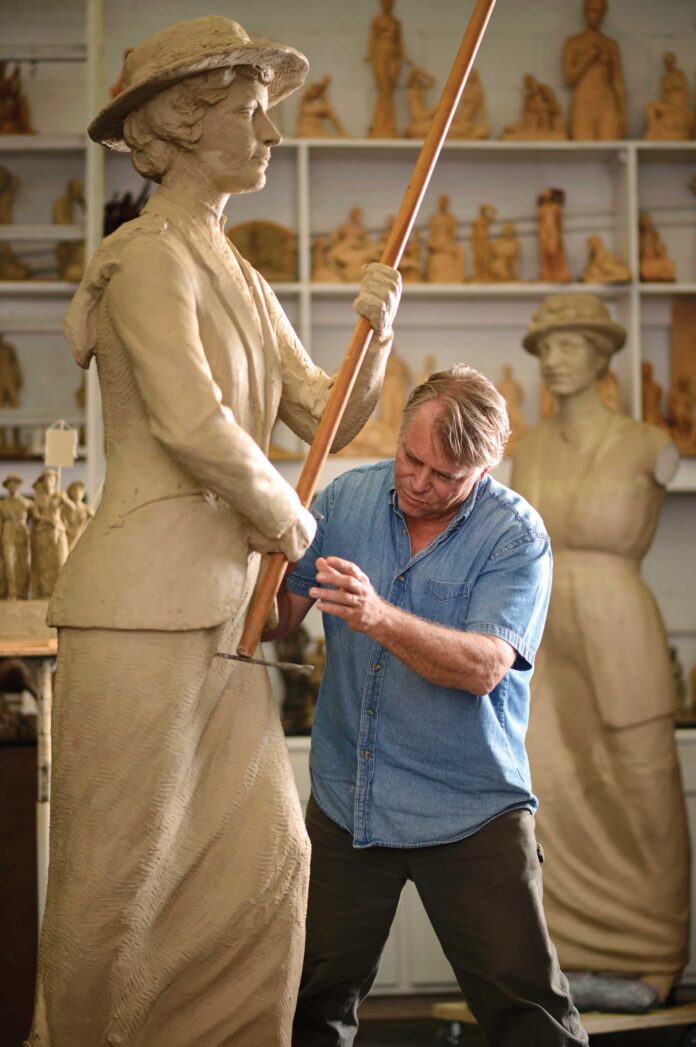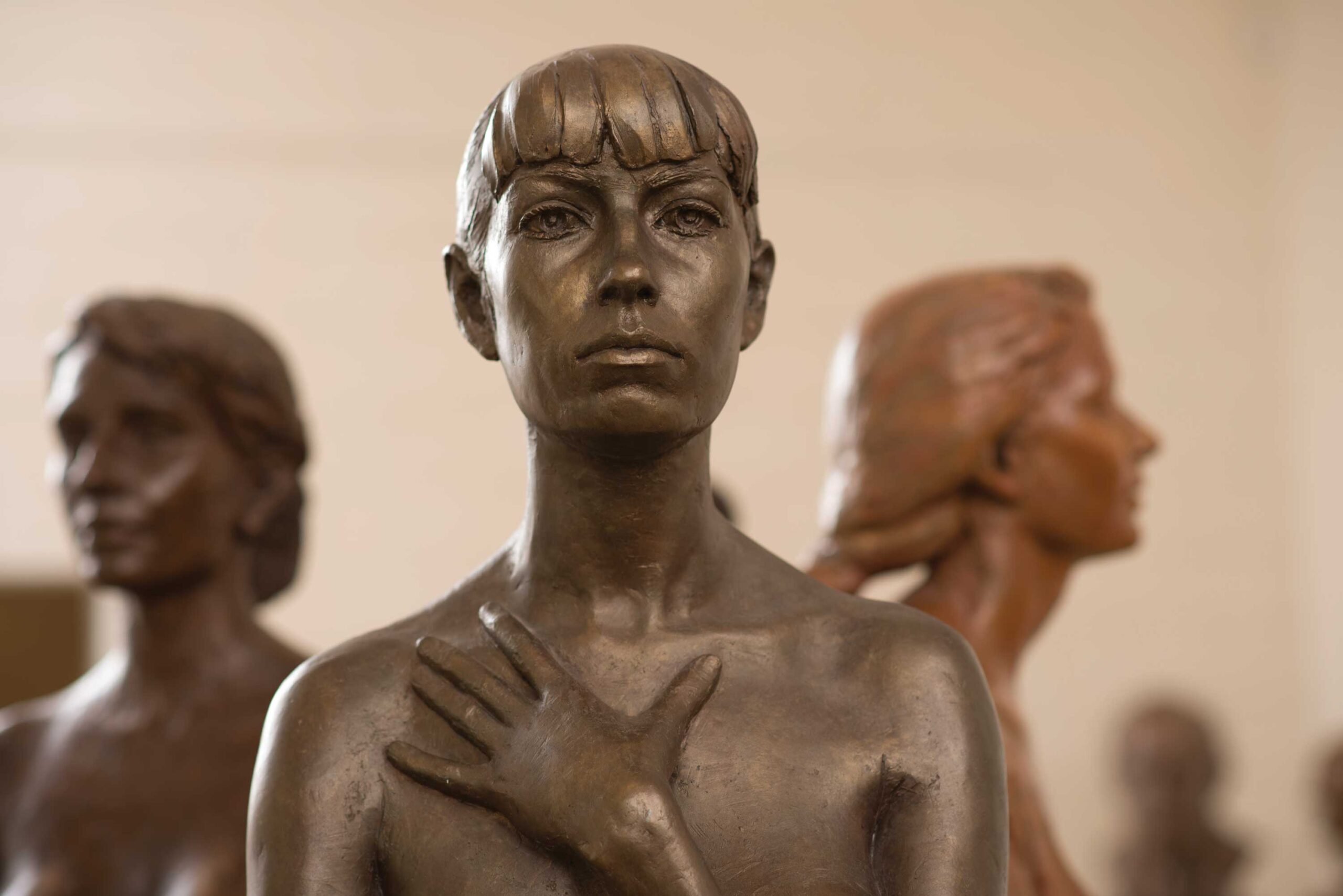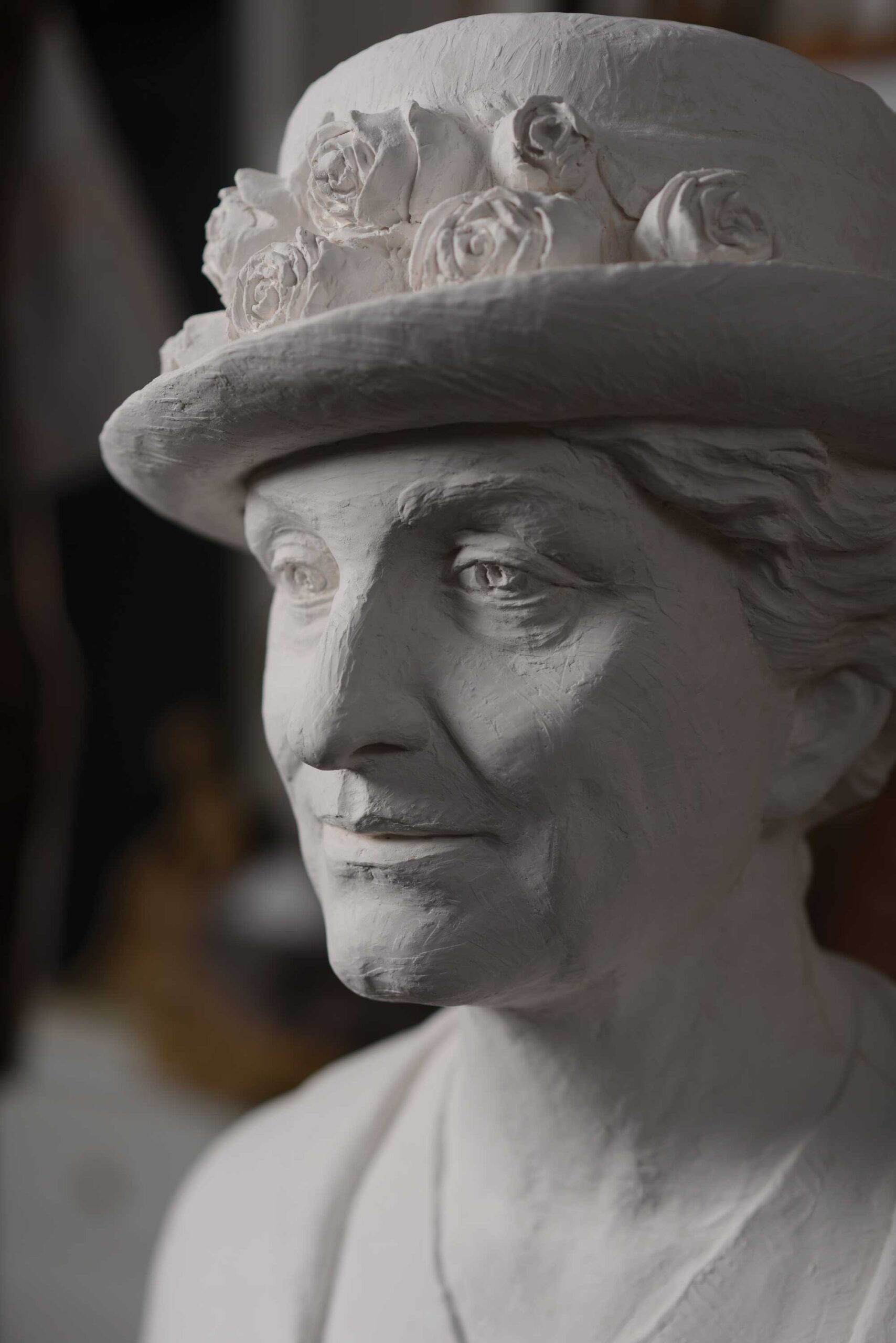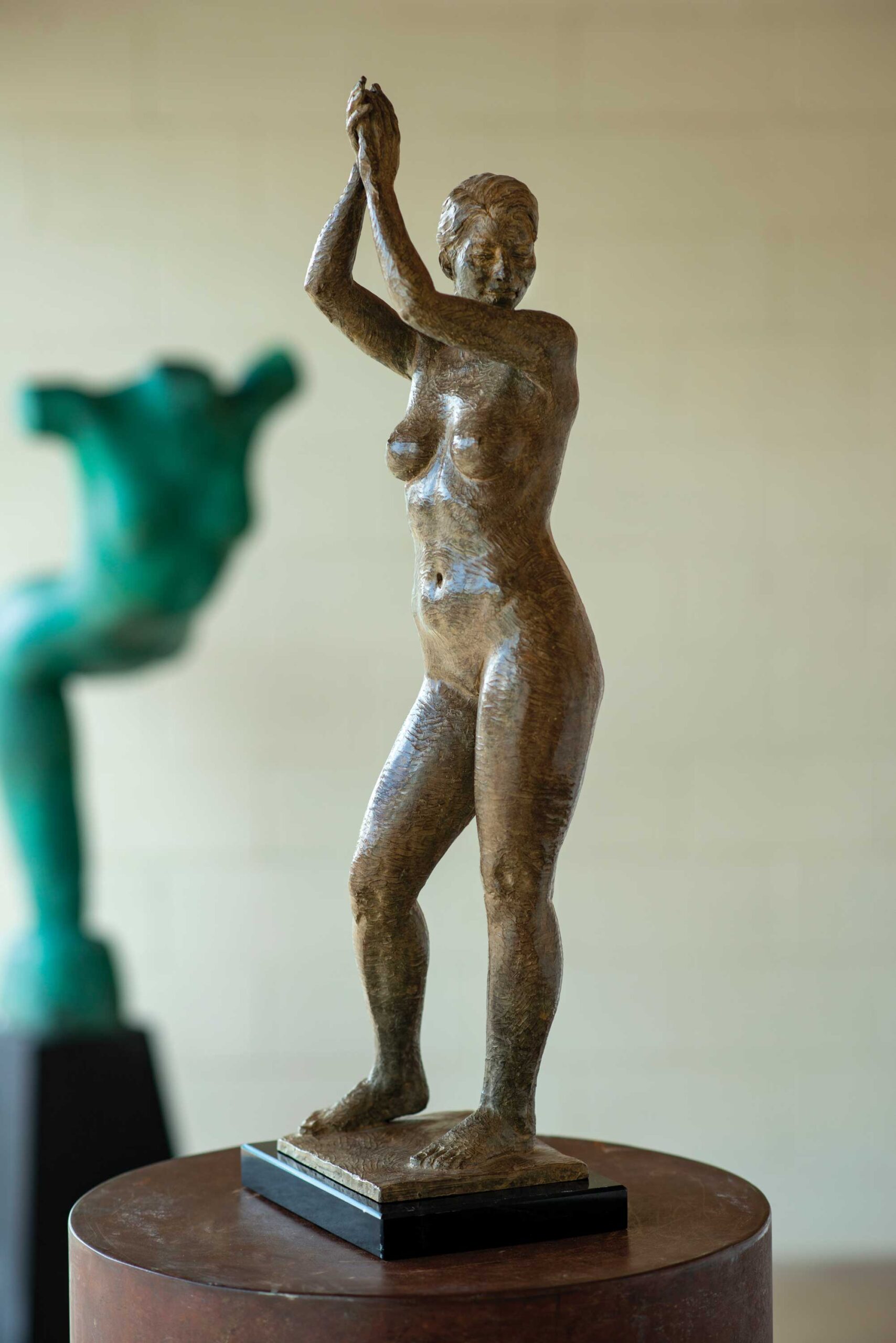
Figurative Art Sculptures of Women by Alan LeQuire
An Unusual Path
Growing up in a rural area outside Nashville, Alan LeQuire (b. 1955) began crafting objects in copper and tin when he was just 11. His initial influence was primarily the “conscious primitivism” pursued by the earlier Tennessee sculptors William Edmondson (1874–1951), Puryear Mims (1906–1975), and Olen Bryant (1927–2017), all of whom used found materials and stone.
After earning an undergraduate degree at Nashville’s Vanderbilt University, LeQuire undertook a one-year apprenticeship under Milton Hebald (1917–2015), an American sculptor living in the Roman Campagna. There the young man learned about bronze casting and began to emulate the Italian master Giacomo Manzù (1908–1991) in always starting his modeling process with wet clay. Returning to the U.S., LeQuire studied figurative sculpture with Peter Agostini in the M.F.A. program of the University of North Carolina at Greensboro.

Fresh out of graduate school, he was commissioned to create Athena Parthenos, which, at 42 feet high, remains the largest indoor sculpture in the Western world. Nashville was already renowned for the full-scale replica of the Parthenon it erected in 1897 to mark the centenary of Tennessee’s becoming a U.S. state. Yet Nashvillians had long dreamed of completing it with a replica of the female goddess who once dominated the original temple in Athens. It took young LeQuire eight years to fulfill that dream in 1990. Today he notes, “She is an idealized figure, of course, and I was attempting to mimic the style of Phidias, but I see the Athena statue as part of the same objective I have had all along — to honor women.”
Though he sculpts on a small scale, too, monumentality has always mattered to LeQuire. Viewers marvel at the four-times-life-size portraits from his ongoing Cultural Heroes series. Among them are his depictions of the blues icons Bessie Smith and Billie Holiday, both of whom championed African Americans’ civil rights despite the risks such views posed to their musical careers.
Highlighting those who have dared to make a difference matters to LeQuire. He recalls, “Noticing how few portraits of women existed in public spaces [only 8 percent of America’s public sculptures honor real women], I wanted to bridge that gap. I have had some wonderful clients who felt the same way. One of my first commissions was a life-size portrait of Margaret Branscomb for Vanderbilt University.” This depiction of the energetic wife of Harvie Branscomb, the university’s chancellor from 1946 to 1963, led LeQuire to create more public monuments.
As of 2020, five of those projects commemorate the triumph of woman suffrage in his native state. Non-Tennesseans may not realize that — just over 100 years ago — it was the Volunteer State that cast the vote needed to ratify the 19th Amendment to the U.S. Constitution, thus granting American women the right to vote.

LeQuire notes, “In 2016 we unveiled my Tennessee Woman Suffrage Monument in Nashville, which has heroic-scale portraits of five women involved in the ratification: Carrie Chapman Catt, Anne Dallas Dudley, Abby Crawford Milton, J. Frankie Pierce, and Sue Shelton White. It seemed appropriate to place these real women on the same grounds in Centennial Park with the Parthenon and Athena. They are a reminder of the importance of real women taking real political action, and for me a continuation of the goal of honoring all women.”
Also in 2020, LeQuire participated in the unveiling of Memphis’s Equality Trailblazers Monument, which includes his busts of six leaders. One of them is the late Rep. Lois DeBerry, the second African American woman to serve in the Tennessee legislature and the first to serve as Speaker Pro Tem.
Smaller, Too
“Over the years,” LeQuire observes, “I have continued to study the female figure working from models and teaching anatomy. These small figures are miniature portraits — some more realistic than others. I am ready to enlarge these works to life-size or greater. I want to sculpt the figure with drapery and expand my subject matter to create more narrative interest. I have been combining multiple figures and animals in pursuit of a pastoral ideal that has been with me from the beginning. I think it is more relevant today than ever, and I want to celebrate our unique place and time with sculpture that is full of life and energy.”
There is evidence of LeQuire’s efforts in this direction, specifically with three new series: Caryatides, Women in Drapery, and Women with Animals.

Though their beauty verges on the timeless, most of these figures bear the names of their actual models, such as Jessica or Katie — to remind us they are just as real as Carrie Catt or Cornelia Fort.

Covering 5,000 square feet, LeQuire Gallery serves several purposes. Foremost is its role as LeQuire’s studio, where he sculpts and has taught traditional methods in drawing, painting, and sculpting since 1984.
View more artist and collector profiles here at FineArtConnoisseur.com.







